The age of radio and television is over.
The effect of the first wave of electronic media was to solidify uniform ideas about news, history and culture. We hear often enough about the post-war American middle class coming together through TV over major historical events, fashion, cereal, cigarettes, Elvis and Walter Cronkite. Even Reagan watched “The Waltons” religiously.
The post-war economic boom was the high point of radio and TV in part because so many Americans had more money to spend than they ever had, and so relied on advertisements and popular culture for direction about what to buy, what to wear and how to act. It’s no surprise it was also the zenith of camp — the gleefully tongue-in-cheek celebration of bad taste.
With the fracturing of our culture into ideological sects by means of multiplying electronic media markets, it’s hard to still talk about “Americans” in general without fostering divisive specters of race, religious or class. One cultural result is the bizarre new penchant of high culture for nostalgia.
Camp, for example, now hardly exists without historical overtones. Parodies of popular culture (as opposed to current-event humor) now almost always reach back in time — even if just a decade or two.
One of the most interesting exhibitions I have seen in a while that touches on camp and American cultural history is a double-edged show of hooked rugs now on view at the Saco Museum called “Rugs All Marked Out.”
The show is fascinating for more reasons than I can go into here, but it’s particularly interesting for laying out a widespread American cultural phenomenon that sprang up in Maine almost 150 years ago and still has living local roots as a cottage industry.
First organized for a 2006 exhibition at the Maine State Museum, “Rugs” is split into two parts. The core of the show revolves around the metal stencil plates, burlap patterns and hooked rugs of Edward Sands Frost (1843-94) of Biddeford.
Frost invented the idea of stenciling patterns on burlap for hooking rugs after seeing so many at the New England farms he visited as a tin peddler. (The name of the hooking group whose contemporary works make the second part of the show — the Maine Tin Pedlars — pays homage to Frost.) Women would draw on burlap and then hook the image. Frost took the idea of design seriously, so he refined and marketed his patterns to the point where they became extremely popular.
From a process and historical standpoint, it’s amazing to see all seven metal stencils of Frost’s “Pattern 59.” The image is a floral featuring an oval group of flowers bracketed by a rectangular frame of botanical forms. Despite “59” ‘s staid and conservative structure, seeing an example of the completed, hooked rug is strangely satisfying, probably because it was completed by hand.
Many of Frost’s designs are much more entertaining. “Pattern No. 7,” for example, is a thick-maned lion that can be seen as the colored burlap pattern side by side with the stencil. Three variously colored versions of its packaging — all priced at 90 cents — are displayed as well. While it’s hilarious on one hand, there is something undeniably impressive about it. It’s like the Mona Lisa of American kitsch. And I love the Mona Lisa.
The didactic impact of the show is fascinating. It reflects the history and cultural reality of the industry as it virally expanded from Frost’s mind to so many fingers, floors and frames across America. There are explanations, tools, partially-hooked rugs and even an example with instructions for visitors to try their own hand at hooking.
The smaller component of “Rugs” features contemporary hooking by Mainers. It’s tough to tell how much of it is self-consciously ironic or naively honest — or even whether that distinction even matters, because it’s all so much fun.
I adore, for example, Alitza Wildes’ “Love of Pugs” for its kitschy humor no less than for its impressively sculptured textures. There are pleasantly attractive florals such as “Winsome Faces” — a gorgeous piece featuring peonies on a rich, black background designed by Pearl Mcgown and hooked by Cathy Williams.
There are interesting geometric works such as Deborah Arcaro’s “Stained Glass Magic” and Kathleen Newell’s eye-poppingly pink “Dots.” And there are humorous narrative images such as a book plate from “Charlotte’s Web,” opining, “He who dislikes cats was in a former life a rat” and a group of blues-jamming birds crooning about the big house.
One of my favorite pieces is Beverly Lambert’s interpretation of a pair of leopards by Dahlov Ipcar; it’s an ideal match of style and medium.
“Rugs” is a fascinating, entertaining and educational show. Moreover, it offers a rarified view of the ebb and flow of popular culture by following a homespun hobby past invention, into industry, through history and all the way to nostalgic remembrance. It’s an exhibition that says a great deal not only about what once was, but what pop culture is — and who we are.
Freelance writer Daniel Kany is an art historian who lives in Cumberland. He can be contacted at:
dankany@gmail.com
Send questions/comments to the editors.

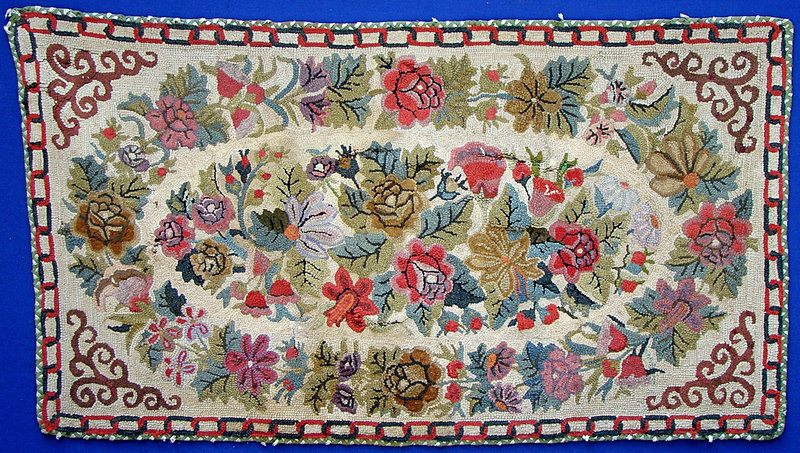
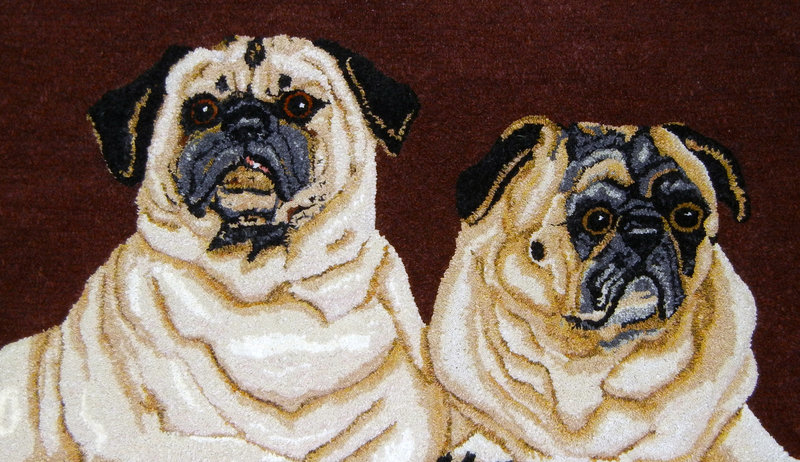
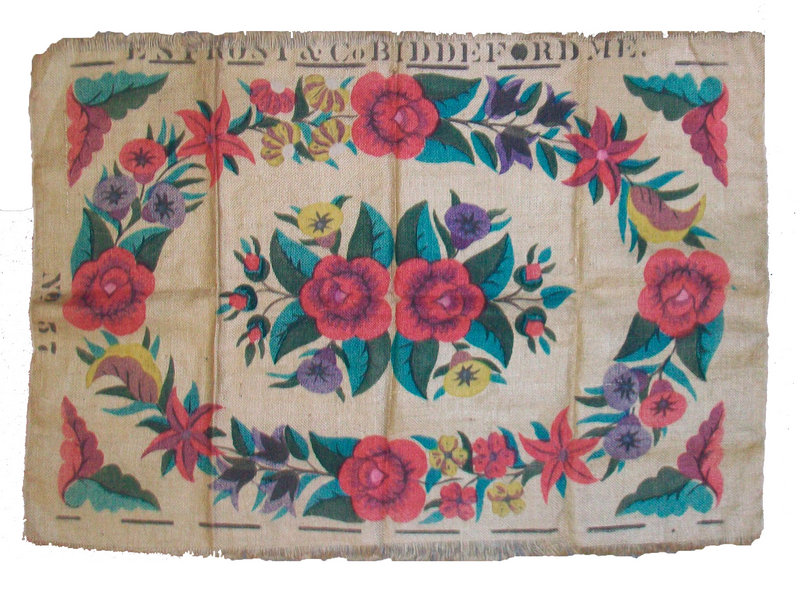
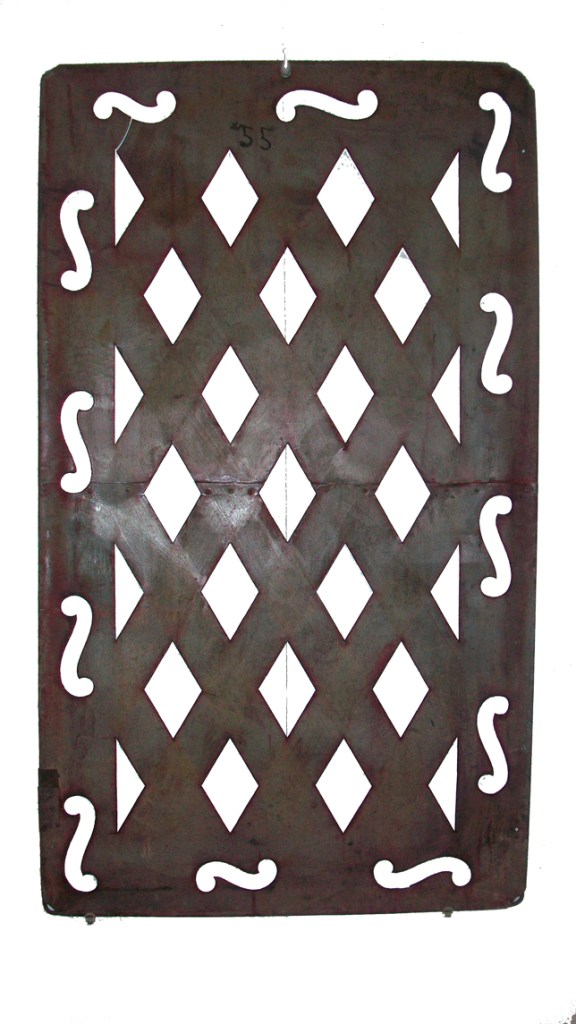
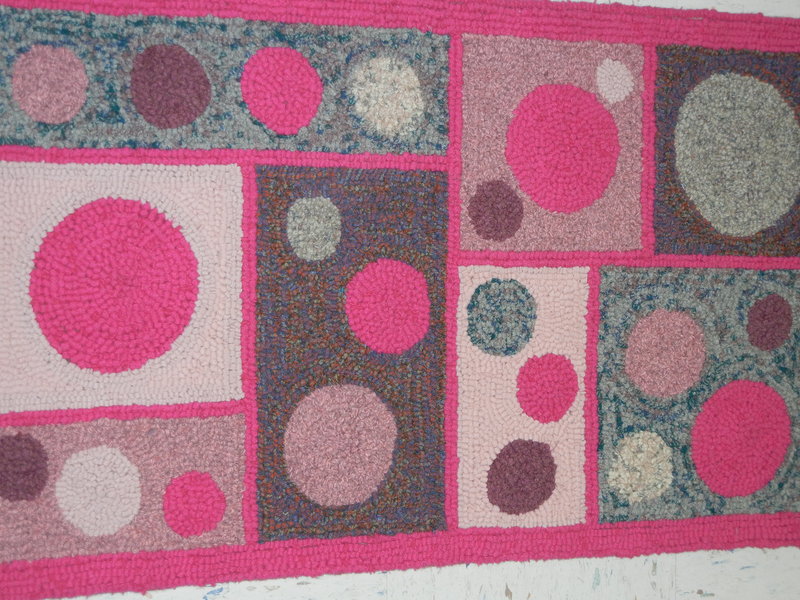

Success. Please wait for the page to reload. If the page does not reload within 5 seconds, please refresh the page.
Enter your email and password to access comments.
Hi, to comment on stories you must . This profile is in addition to your subscription and website login.
Already have a commenting profile? .
Invalid username/password.
Please check your email to confirm and complete your registration.
Only subscribers are eligible to post comments. Please subscribe or login first for digital access. Here’s why.
Use the form below to reset your password. When you've submitted your account email, we will send an email with a reset code.